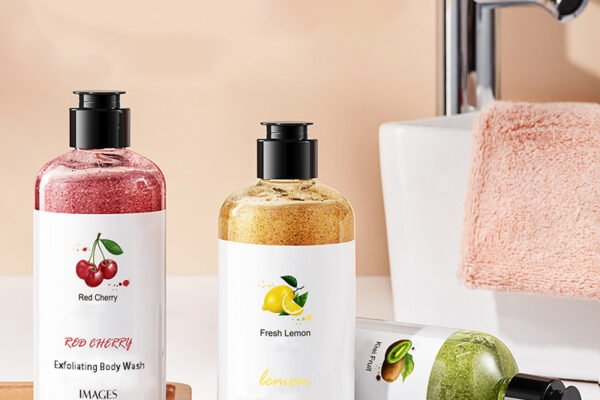News-Driven Lead: Why Cost Signals Are Flashing for B2B Buyers
In recent months, three headlines have echoed through the oral-care value chain. First, a hydrogen-peroxide mouthwash was recalled nationwide over a child-resistant packaging issue—an event that underscores how packaging compliance can instantly reshape program costs and timelines for contract work in oral hygiene.
Second, the European Union’s ongoing microplastics restrictions are maturing, with rinse-off categories facing phased requirements. This accelerates reformulation roadmaps and documentation needs that roll straight into the cost models B2B buyers negotiate with any Munvatten tillverkare.
Third, a major oral-care company announced plans to outsource mouthwash production while consolidating other lines—proof that even top players rebalance make-versus-buy when cost-to-serve, capacity, and regulatory variables converge. For B2B procurement, the message is clear: total landed cost is shifting from piece price to the sum of design, compliance, and supply assurance.
The Real Cost of Choosing a Mouthwash Manufacturer
Selecting a Mouthwash Manufacturer is not simply a unit-cost exercise; it is a total-ownership decision. Beyond tolling or turnkey quotes, B2B teams absorb the workflow around discovery, documentation, and launch readiness. Activities like formulation alignment, artwork readiness, claims substantiation, and change-control become cost drivers because they determine how often teams loop back, who owns the rework, and where timelines flex. A supplier that frames costs transparently—mapping development gates, sample iterations, and regulatory document preparation—helps buyers keep governance tight and budgets stable.
Hidden cost triggers tend to appear where scope was implied rather than defined: label copy updates that ripple into re-approvals, minor flavor tweaks that require new stability checks, or packaging changes that pull in new specifications. A Mouthwash Manufacturer with mature program management will surface these scenarios during intake, quantify the impact qualitatively, and propose preventive paths so the buyer’s commercial plan remains intact. For B2B stakeholders, the winning lens is “designing out” cost surprises early—long before a purchase order is issued.
Formulation, MOQ & Packaging: How Scope Design Sets Your Cost Curve

Scope design is where cost trajectories are set. When B2B buyers pursue a custom formulation with a Mouthwash Manufacturer, each choice—active profile, flavor system, solvent profile, sweetener strategy—drives different testing pathways and documentation. Order cadence and batch strategies shape how efficiently lines can be scheduled. In practice, aligning on a scalable mouthwash production plan means agreeing on a minimal viable scope for launch and a controlled roadmap for enhancements, rather than pushing every preference into the first run.
Packaging is equally consequential. Bottle, closure, and label workflows can multiply touchpoints across artwork, component readiness, and co-packing. If label content spans multiple regions, the review stack deepens, and small edits can cascade. This is why private-label mouthwash programs benefit from a turnkey oral-care manufacturing partner that can orchestrate packaging readiness with compliance labeling and secondary packaging. The goal is to reduce the number of times teams re-handle the product before it ships—because every extra touch introduces delay risk and cost. For instance, selecting a Klorhexidinglukonat munvatten variant can introduce additional regulatory checks and stability documentation requirements.
When speaking with potential partners, listen for how they talk about “program design” rather than just “production.” A capable Mouthwash Manufacturer will explain how batching windows, component inbound plans, and artwork sign-offs synchronize to protect your margin without locking you into rigid volumes. That vocabulary signals experience with oral care contract manufacturing, not just filling capacity.
Quality Systems & Audit Readiness: Compliance as a Cost Stabilizer
Quality management is often described as a safeguard; for B2B buyers it is also a stabilizer of cost. Audit-ready documentation, controlled manufacturing instructions, and defined release processes reduce deviation risk, speed investigations when issues arise, and keep logistics flowing. The most expensive moments in private-label programs are rarely the initial quotes—they are the stalls, relabels, or reworks that happen when a process was under-documented.
Regulatory expectations around oral rinses and mouthrinses are well signposted by professional bodies and regulators; aligning claims and product categories with appropriate documentation keeps marketing ambition from outpacing compliance. A Mouthwash Manufacturer with a clear approach to change-control, complaint handling, and traceability will translate that rigor into predictable operations. For procurement, the right questions revolve around how the partner proves control, not just how they promise it.

Supply Chain Resilience & Risk Pricing
Supply assurance is cost assurance. Ingredient portfolios change over time as suppliers update standards or as regions adopt new environmental rules. For rinse-off cosmetics in particular, evolving microplastic restrictions can influence which texturizers, abrasives, or decorative elements remain permissible—nudging B2B buyers toward alternative inputs and fresh documentation. In some cases, shifting to a Bakpulver munvatten formulation may require sourcing alternate suppliers to meet both performance and compliance criteria. A Mouthwash Manufacturer that monitors regulatory horizons and maintains qualified alternates gives procurement leverage against volatility.
Logistics choices matter as well. Freight terms, consolidation practices, and inventory responsibility points shape cash flow and exposure. Warehousing options near target markets can improve launch reliability, especially when retail or marketplace partners expect synchronized availability. Ask how your potential oral care supplier models disruptions and what governance cadence they use to escalate risk early. These are the conversations that transform “we’ll see” into “we’re prepared,” which is the difference between budget drift and budget discipline.
Commercial Terms, Governance & Cost Transparency
Cost models vary, and the label on the quote—tolling or turnkey—doesn’t reveal how transparent the structure really is. B2B buyers should seek a Mouthwash Manufacturer that explains how development efforts, pilot lots, packaging handoffs, and regulatory documentation are accounted for. Even when a supplier offers flexible approaches, the winning pattern is the same: clear scope, clear ownership, and clear triggers for change orders.
Commercial terms should mirror operational reality. Payment terms, inventory ownership transfer points, service-level expectations, and launch calendars must line up with how the program will actually run. Quarterly business reviews help hold both sides to the plan: measuring schedule adherence, tracking change-control discipline, and agreeing on continuous-improvement priorities that remove waste from the system. B2B governance is not a meeting for slides; it is the cost-control engine for your oral-care portfolio.
When market signals shift—as they did with the recent outsourcing headline—transparent partners move first to protect the program: recalibrating capacity, pre-qualifying alternates, or sequencing design tweaks so retail resets remain on track. Those responses are only possible when the commercial framework invites early visibility and joint decision-making.

Shortlist Signals: How B2B Buyers De-Risk Before PO
Strong Mouthwash Manufacturer candidates reveal themselves during capability reviews. Look for teams that articulate how they convert a concept brief into a compliant, shelf-ready product without piling assumptions onto the buyer. They should discuss private-label mouthwash supplier responsibilities in plain language: who drafts and owns the master manufacturing instructions, how packaging specifications are locked, how change-control gates prevent scope creep, and how launch readiness is certified before the first shipment.
Ask for a written transfer plan from samples to sustained production: who leads trial runs, what documentation accompanies the handover to routine manufacturing, and how issues are escalated. Probe how the partner tracks regulatory watch-lists relevant to rinse-off products and how quickly they can pivot to microplastic-compliant inputs or alternative packaging. Finally, insist on an intake process that captures label claims and regional variations with enough detail to avoid relabeling. These signals separate a scalable mouthwash production partner from a simple filler.
Slutsats
Recent industry shifts—from regulatory changes to supply chain updates—prove that selecting a Mouthwash Manufacturer goes beyond price per unit. The best partners minimize hidden costs through regulatory foresight, packaging efficiency, and supply chain agility.
For B2B buyers, success hinges on transparency. A strong oral care supplier aligns formulation, compliance, and logistics with your commercial goals—turning cost control into a competitive edge.







